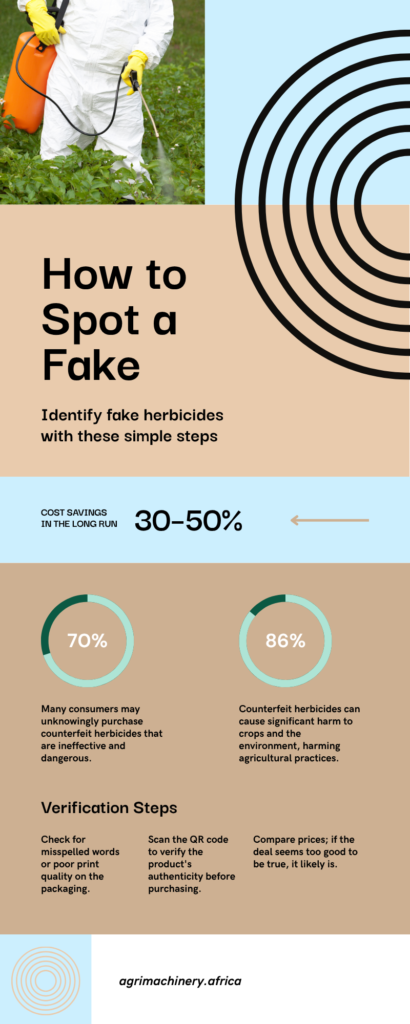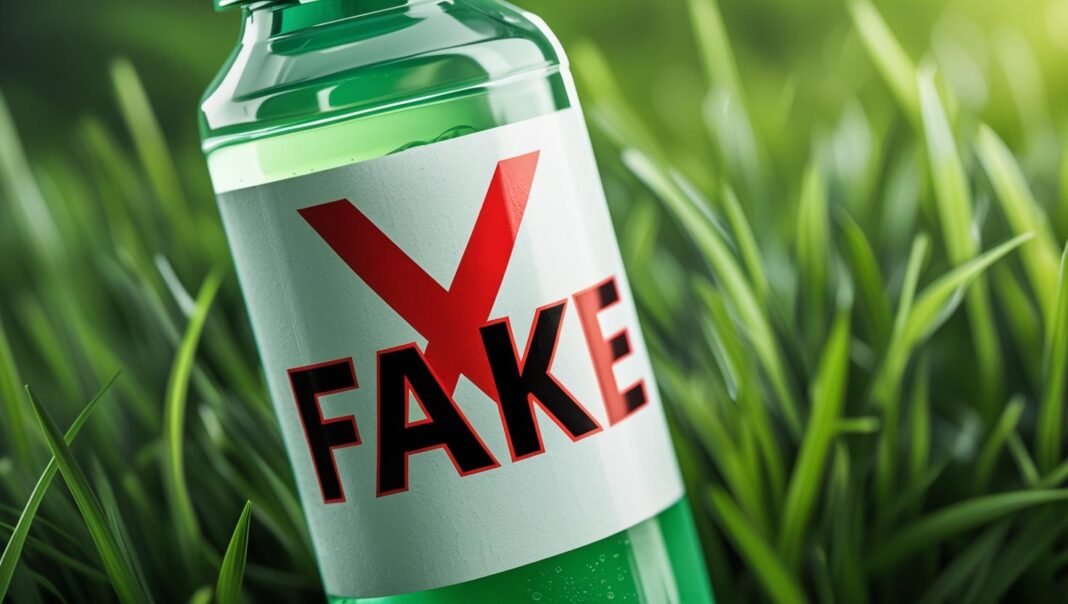The agriculture industry is no stranger to counterfeit products, but the rise of fake herbicides poses a particularly dangerous challenge.
Across regions like Africa, Asia, and parts of South America, unsuspecting farmers are falling victim to substandard or fake herbicides that either do not work, harm crops, or damage the environment.
According to the Food and Agriculture Organization (FAO), up to 15% of pesticides in developing countries could be counterfeit, costing farmers billions of dollars in crop losses and long-term soil damage.
For farmers and agro-dealers alike, identifying a real herbicide from a fake one has never been more critical.
This in-depth guide will walk you through practical steps to identify authentic herbicides, understand why counterfeit products exist, and what you can do to safeguard your crops and income.
1. Why Counterfeit Herbicides Are a Growing Problem
Fake herbicides are often cheaper, poorly packaged imitations of genuine products. They may contain incorrect active ingredients, no active ingredient at all, or even dangerous chemicals not approved for use.
Key risks include:
-
Crop failure or reduced yields
- Advertisement - -
Soil contamination
-
Resistance buildup in weeds
-
Economic losses due to reapplication and replanting
-
Health hazards for users and consumers
- Advertisement -
Counterfeiters exploit weak regulations, poor supply chain monitoring, and farmer desperation during planting seasons.
2. Signs Your Herbicide Might Be Fake
Here are red flags that your herbicide may be counterfeit:
a) Suspiciously Low Price
If a product is significantly cheaper than similar branded herbicides, especially at peak farming season, it could be fake.
b) Poor Packaging Quality
Look out for:
-
Faded labels
-
Broken seals
-
Misspelled words
-
Lack of batch number or expiry date
c) Unusual Smell, Color, or Texture
Real herbicides are manufactured under strict quality control. If the color, smell, or viscosity seems off, be cautious.
d) Ineffectiveness in the Field
If weeds persist after application or you see plant damage within days, you may be dealing with a substandard product.
 3. How to Verify the Authenticity of Your Herbicide
3. How to Verify the Authenticity of Your Herbicide
a) Buy from Authorized Dealers Only
Purchase your herbicide from certified agro-vets or distributors listed by the manufacturer or your local agriculture authority. Avoid roadside vendors or unknown online platforms.
b) Use Digital Verification Tools
Many genuine herbicide companies now include QR codes or scratch panels that allow farmers to verify product authenticity through SMS or a mobile app.
Examples include:
-
Bayer’s ‘Mobile Verify’ system
-
Syngenta’s QR code security labels
-
CropLife’s anti-counterfeit awareness programs
c) Check Regulatory Approvals
In many countries, approved herbicides are listed by the Pest Control Products Board (PCPB) or an equivalent authority. Cross-reference product names and batch numbers on official websites.
d) Inspect the Label Thoroughly
Confirm:
-
Correct spelling of the product and company name
-
Registration number from your country’s pesticide authority
-
Clearly marked manufacture and expiry dates
-
Contact information for the manufacturer
e) Ask for a Receipt
Legitimate sellers will always issue a receipt, which can be useful in case of future claims or investigations.
4. What To Do If You Suspect a Fake Herbicide
a) Stop Using It Immediately
Cease application to prevent further damage to your crops and soil.
b) Report It to Authorities
Report the suspected product to:
-
The national pesticide regulatory authority (e.g., PCPB in Kenya, NAFDAC in Nigeria)
-
Local extension officers or agricultural input associations
-
The original manufacturer (through their customer service or anti-counterfeit reporting channels)
c) Keep the Packaging
Retain the container and receipt as evidence for further inspection.
5. How Governments and Brands Are Fighting Back
Leading agrochemical companies and governments are taking steps to combat this crisis:
-
Enhanced product labeling with tamper-proof technology
-
Stricter regulations and random inspections of agro-dealers
-
Awareness campaigns targeting farmers
-
Collaborations with customs and anti-counterfeit bodies
Still, the burden often falls on farmers and agro-dealers to stay vigilant and educated.
6. Tips for Safe and Responsible Herbicide Use
Whether your product is genuine or not, safe handling remains essential:
-
Always read and follow label instructions.
-
Use protective gear during application.
-
Avoid overuse or mixing incompatible products.
-
Store herbicides in their original containers, away from sunlight and children.
Protect Your Land, Protect Your Livelihood
Fake herbicides are more than just a nuisance—they’re a real threat to food security, health, and economic progress. As counterfeiters become more sophisticated, farmers must also become more informed.
The good news? You don’t need high-tech tools—just keen observation, trusted sources, and a few verification steps can go a long way in protecting your investment.
When in doubt, don’t spray it out. Check it first.
Also Read
Fake Farm Inputs: Counterfeit Crisis Threatens Kenya’s Agriculture
Fertilizer Costs Surpass Corn Revenue, StoneX Warns of Margin Squeeze
